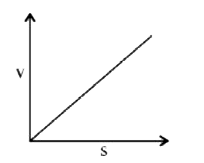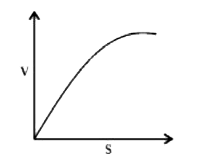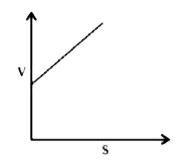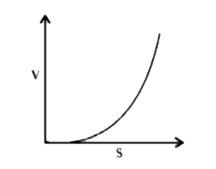Assertion: Two particles start from the rest simultaneously and proceed with the same acceleration in the same direction. The relative velocity of these particles will be zero through motion.
Reason: At every moment the two particles will have same velocity.
If both Assertion and Reason are true and the Reason is the correct explanation of Assertion.
If both Assertion and Reason are true but Reason is not the correct explanation of Assertion
If Assertion is true but the Reason is false
If both Assertion and Reason are false
The correct Answer is:C
Knowledge Check
- Question 1 - Select One
A: Two particles starts from the rest simultaneously and proceed with the same acceleration in the same direction. The relative velocity of these particles will be zero throughout motion.
R: At every moment the two particle will have the same velocity.AIf both A and B are true and R is the correct explanation of ABIf both A and R are true but R is not correct explantion of ACIf A is true but R is falseDIf A is false but R is true - Question 1 - Select One
Two particles start from rest simultaneously and are equally accelerated throughout the motion, the relative velocity ofone with respect to other is :
AZeroBNon zero and directed parallel to accelerationCNon zero and directed opposite to accelerationDDirected perpendicular to the acceleration - Question 1 - Select One
A particle starts from rest and moves with constant acceleration. Then velocity displacement curve is:
A B
B C
C D
D
- Question 1 - Select One
Two particles start simultaneously from a point with equal velocities v each along two straight inclined at 60∘. Find their relative velocity
AVB2VCV2D3V - Question 1 - Select One
A particle starts from rest with uniform acceleration a. Its velocity after n seconds is v. The displacement of the particle in the two seconds is :
A2v(n−1)nBv(n−1)nCv(n+1)nD2v(2n+1)n
Similar Questions
A particle starts from rest and moves with constant acceleration. Then velocity displacement curve is:
View SolutionTwo particles describes the same circle of radius a in the same sense with the same speed v. What is their relative angular velocity?
View SolutionA particle starting from rest undergoes a rectilinear motion with acceleration a. The variation of a with time t is shown below. The maximum velocity attained by the particle during its motion is
 View Solution
View SolutionA particle starting from rest undergoes a rectilinear motion with acceleration a. The variation of a with time t is shown below. The maximum velocity attained by the particle during its motion is
 View Solution
View SolutionGive examples for the particle where (a) the velocity is in opposite direction to the acceleration (b)the velocity of the particle is zero but is acceleration is not zero.
View Solution

